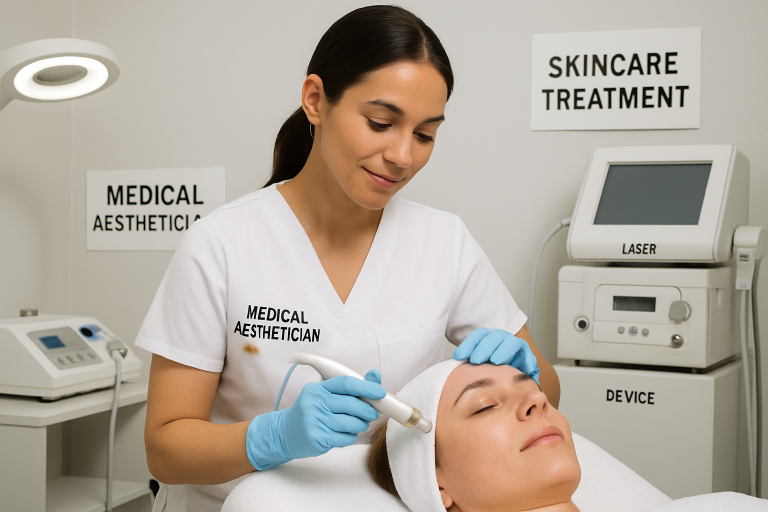In the digital age, your dental practice’s success increasingly depends on how visible and credible you are online. That’s why Search Engine Optimization (SEO) is no longer optional—it’s essential. But how do you measure SEO success? You track the right Key Performance Indicators (KPIs).
As a dental leader, understanding these KPIs is crucial to ensure your marketing investment is driving real results. At Firegang Dental Marketing, we specialize in helping dentists grow through proven dental SEO strategies. Below are the key SEO KPIs every dental practice must track to stay competitive and thrive.
1. Organic Traffic
What it is: The number of visitors who find your website through unpaid search engine results.
Why it matters: Organic traffic shows how well your site is ranking for relevant keywords like “dentist near me” or “teeth whitening [your city].” More organic traffic often means higher visibility and brand authority.
How to track it: Google Analytics or other SEO tools like Ahrefs or SEMrush can show your organic traffic trends over time.
2. Keyword Rankings
What it is: The position your website holds on search engines for specific dental keywords.
Why it matters: Ranking on the first page of Google (especially in the top 3 spots) for targeted dental terms is crucial for attracting new patients. If you’re not ranking, your competitors are.
Pro Tip: Focus on high-intent local keywords like “emergency dentist [city]” or “cosmetic dentist near me.”
3. Local Pack Visibility (Google Maps Rankings)
What it is: Your ranking in Google’s local 3-pack—the map listings that show up in local searches.
Why it matters: Many patients click on the local map listings first. If your practice isn’t there, you’re losing leads. Your Google Business Profile (GBP) must be optimized for local SEO.
How to track it: Use tools like BrightLocal or Whitespark to monitor your local pack performance.
4. Click-Through Rate (CTR)
What it is: The percentage of users who click on your link after seeing it in search results.
Why it matters: A high CTR means your titles and meta descriptions are compelling and relevant. A low CTR may indicate poor messaging or irrelevant search listings.
Improve it by: Writing clear, benefit-driven titles and descriptions. Use local identifiers and patient-focused language.
5. Conversion Rate (Appointments or Form Fills)
What it is: The percentage of website visitors who complete a desired action—like scheduling an appointment or filling out a contact form.
Why it matters: SEO traffic is great, but only if it leads to booked patients. Your website should guide visitors toward becoming patients.
How to track it: Google Analytics goal tracking or CRM tools can show how many visitors convert into leads.
6. Bounce Rate
What it is: The percentage of visitors who leave your website after viewing only one page.
Why it matters: A high bounce rate can indicate poor user experience, slow page speed, or irrelevant content. All of these factors affect your SEO ranking.
Fix it by: Improving page load speed, adding clear calls-to-action, and offering helpful content like service pages, FAQs, or blog posts.
7. Mobile Usability
What it is: How well your website performs on mobile devices.
Why it matters: Most dental patients search from their phones. A mobile-friendly site improves both user experience and SEO rankings.
How to track it: Use Google Search Console’s Mobile Usability Report or perform manual testing on different devices.
8. Page Load Speed
What it is: How quickly your site loads on desktop and mobile devices.
Why it matters: A slow website frustrates users and leads to higher bounce rates. Google also uses speed as a ranking factor.
How to improve it: Compress images, minimize code, and use a quality hosting provider.
9. Backlink Profile
What it is: The number and quality of websites linking to your site.
Why it matters: Backlinks signal trust and authority to search engines. The more credible sites link to you, the higher you can rank.
Get backlinks by: Publishing local content, joining dental directories, or being featured in local media or blogs.
10. Google Business Profile Engagement
What it is: Views, clicks, calls, and direction requests from your Google Business Profile.
Why it matters: An optimized GBP can drive significant local traffic and new patient inquiries.
Track performance in: Your Google Business Profile dashboard.
Final Thoughts from Firegang Dental Marketing
Tracking these dental SEO KPIs isn’t just about numbers—it’s about understanding your patients’ online behavior and making data-driven decisions to grow your practice. At Firegang Dental Marketing, we work exclusively with dentists to drive more local visibility, more qualified traffic, and ultimately, more patients.
If you’re not already tracking these KPIs, you could be missing out on major growth opportunities. Let our dental SEO experts help you turn your website into your practice’s most valuable marketing asset.











